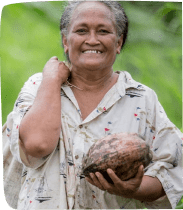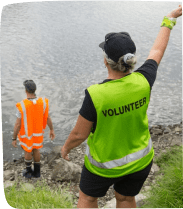The COVID-19 pandemic pushed millions into poverty and dramatically increased inequality in East Africa, but not all are equally affected. 52 million people in Sub-Saharan Africa were projected to be pushed into extreme poverty between 2019 and 2021. But today, the richest 10 per cent of East Africans are earning an average of 47 per cent of pre-tax national income across the region. Meanwhile, the poorest 50 per cent of citizens earn 13.3 per cent of national income.
Instead of taxing the wealthy, East African governments are planning to slash their public spending on pro-poor services like healthcare, education, agriculture and social protection in the coming years.
These cuts will worsen East Africa’s economic crisis, and deepen poverty and inequality in the region, but it is not too late to change direction – says the latest edition of Oxfam and DFI’s Commitment to Reducing Inequality Index (CRII) report. Titled “The Inequality Crisis in East Africa,” the new report will be launched publicly at an international forum of government, civil society, private sector and donor representatives from East Africa and beyond, in Nairobi on 9th February, 2022.
Parvin Ngala, Regional Director (Interim) of Oxfam Horn, East and Central Africa, says:
“With these spending cuts, the region and respective countries risk spiralling into a never-ending cycle of inadequate health services, poor education facilities, economic decline with women and youth caught at the centre of the fall out/unable to maximise and indeed shape the future that the continent has potential for.”
East African countries have seen impressive economic growth in the past two decades, and significant reductions in poverty in most of the countries. But three have seen a widening gap between the richest and the poorest, and there has been little progress in reducing inequality in the other countries.
The pandemic, compounded by locust infestations and climate crises across East Africa, has brought the region’s worst economic crisis in decades, with millions losing their incomes, working hours, and education; exacerbating poverty, inequality and food insecurity:
- Over 60 per cent of citizens reported losing income or work due to the pandemic, according to surveys from four East African countries.
- The pandemic will push 11 million people into poverty in DRC, 6 million in Tanzania and 2.4 million in Uganda, according to UN estimates.
- Some 900,000 Rwandans or 7 per cent of the population will have fallen into poverty by 2021, according to the World Bank.
- 1 million people in Kenya and 3.8 million people in Somalia are at risk of starvation due to drought.
According to the report, COVID-19 revealed that East African countries were unprepared for a pandemic. They had:
- limited access to essential health services – reaching less than 60 per cent of the population in all countries;
- an average of 7 per cent of people spending catastrophic proportions (more than 10 per cent) of their income on healthcare;
- limited commitment to spending on healthcare, with under 10 per cent of government budgets dedicated to health in almost all countries;
- extremely low access to social protection benefits (using pension coverage as a proxy), with only 10.5 per cent coverage on average, and under 10 per cent in six countries;[1]
- very low social protection spending of only 7 per cent of budgets (only 40 per cent of the global average);
- an average of only 20 per cent of workers on formal contracts, therefore having rights to sick pay, job protection etc.
During the COVID-19 crisis, many governments increased their spending on health and social protection. But now they have long-term plans to slash public spending, which are being encouraged by lending bodies such as the IMF. From 2022 to 2026, five East African countries plan to reduce annual public spending by $4.7bn compared to 2021, IMF projections indicate. According to “The Inequality Crisis in East Africa,” not implementing these cuts would allow East African countries to quadruple health spending from now until 2026.
In South Sudan, where military generals outnumber doctors, health spending could rise by 13 times if these spending cuts are reversed. On the other hand, the cuts threaten to hamstring the abilities of East African governments to spend on health, education, social protection and food security so as to protect and support those marginalised by the pandemic and the economic crisis.
Matthew Martin, Director of Development Finance International, says:
“All the countries of the region are nowhere near reaching their national development goals on education, health and social protection. If these cuts are allowed to happen, this will mean East Africa is abandoning all hope of reaching the Sustainable Development Goals by 2030, and allowing extreme inequality to grow unchecked.”
To make matters worse, most East African governments have been forced to use more and more of their budgets to service their ballooning debts, rather than investing in their people. The report notes that from 2020 to 2021, 35.2 per cent of government revenues in East Africa were spent on debt repayment, an average of five times as much as they spent on health. South Sudan spent 28 times as much on debt servicing as they spent on health.
So, what can be done to reverse this crisis?
According to DFI and Oxfam, the report shows that taxing wealthy East Africans and corporations would give governments a way out of the crisis, and allow them spend more on public services that reduce inequality. Surveys from Kenya, Ethiopia and Uganda show that over 71 per cent of citizens think it is fair to tax the rich more to fund programmes that benefit people living in poverty. If East African governments increase their tax revenues by just 1 per cent of their GDP, they would raise an additional $4.9bn each year for the next five years, which would be enough to raise health spending by an average of 77 per cent annually.
DFI and Oxfam also argue that comprehensive debt relief is essential for many countries in the region to have enough money to increase spending on basic services
Matthew Martin, Director of Development Finance International, says:
“All countries in the region need to increase taxes on the wealthiest individuals and largest corporations, and stop giving them tax exemptions. But this alone will not produce anywhere near enough money to fund universal free health care, education, social protection, food and water. External creditors should cancel all debt payments between now and 2030 to help pay for these basic needs.”
DFI and Oxfam recommend that East African governments urgently:
- reverse the planned budget cuts and increase spending for health, education and social protection.
- fund these enhanced spending efforts by increasing taxes on the wealthiest individuals and largest corporations and ending wasteful tax exemptions.
- dramatically improve labour rights, including introducing or raising minimum wages.
They also recommend that the IMF and World Bank should transform their lending programmes to encourage East African countries to increase pro-poor and social spending, redistribute wealth through progressive taxation, and enhance labour laws and protections.
They urge the international community to accelerate the distribution of free COVID-19 vaccines to all East African countries, to ensure high levels of vaccine coverage by June 2022; and to cancel all debt service obligations between now and 2030, in order to allow East African countries to reach the Sustainable Development Goals.
Finally, DFI and Oxfam recommend that the African Union and East African Community urgently recognise their members’ inequality crises, and establish a plan and monitoring systems to track government measures to reduce inequality.
Notes to editors
Download the “The Inequality Crisis in East Africa,” report here after Feb 9, 2022 at 00:01 EAT.
The report launch event will take place on 9th February, 2022 at Kenyatta International Conference Centre (Abadares conference hall) in Nairobi, Kenya, and have in attendance dignitaries including (remote or physical):
- E. Dr. Abdirahman Dualeh Beileh, Minister of Finance, Federal Government of Somalia (Keynote address)
- Haji Farhiya Ali – Senator, Deputy Majority Chief Whip, & member of Committee on Finance and Budget (Kenya)
- Eric Wafukho – Chief Administrative Secretary, The National Treasury and Planning Ministry
- Usher Wilson Owere – Chairman General, The National Organisation of Trade Unions (Uganda) (remote)
- Jason Rosario Braganza – Executive Director, AFRODAD
- Filbert Baguma – General Secretary, Uganda National Teachers’ Union (remote)
- Gilbert Wangalwa – Deputy Country Director – Amref Health Africa
- Alvin Mosioma – Executive Director, The Tax Justice Network Africa (TJNA)
- Tang Xiaoyang – Vice Chair, Department of International Relations | Tsinghua University (remote)
[1] Pension coverage is used as a proxy because data on overall social protection coverage are not available for all countries.





